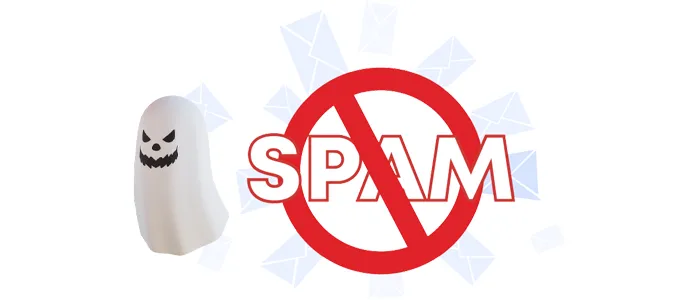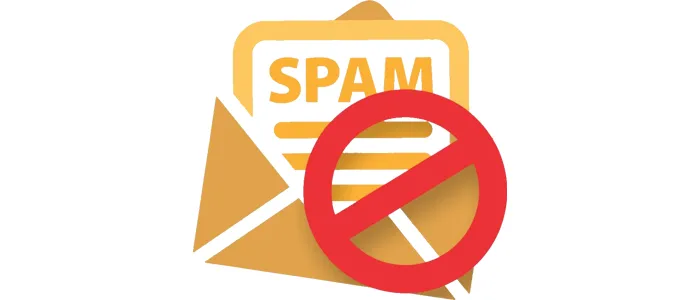What Is Ghost Traffic/Spam Traffic?

Before we could get into detail about the topic, let’s brief about Ghost Traffic/ Spam Traffic. In simple words, Ghost Traffic is the number of false visits created in your Google Analytics [GA].
There are a few websites that create false visit entries in the GA Account, which will be considered as visited. The fact is that they have not visited your website and that is why it is known as Ghost Traffic.
There are a few different definitions for “ghost traffic” or “spam traffic”, but essentially it refers to any type of web traffic that is either fake or generated by automated means.
This can include things like bots or scrapers that hit your website repeatedly, fake referrals from sketchy websites, or even human beings paid to click on ads or visit websites.
Ghost traffic is generally considered to be worthless and can even be harmful to your website, as it can inflate your traffic statistics and skew your analytics.
It’s important to be able to identify ghost traffic so that you can filter it out and get an accurate picture of your website’s real performance.
Also Read: 12 SEO Audit Tools to Use for Website Analysis & Optimization
How Exactly Does Ghost Traffic/Spam Referral Traffic Work?

There are a few ways that ghost traffic/spam referral traffic can work, but the most common is through bots or automated programs that visit websites and inflate their traffic statistics.
These programs can be designed to click on ads, visit specific pages, or even just generate a large number of page views. The spammers run an automated JavaScript similar to search bots, that randomly crawls into any website and its pages which will lead them to other web pages.
They also usually come from sketchy websites or networks of sites that exist solely to generate ad revenue.
The crawlers run the script on the webpage and will get the web content. The process ends by running the GA tracking code in which the script attaches the referral source, user ID, tracking code and the page viewed false details, etc.
Ghost traffic can also be caused by human beings paid to click on ads or visit websites. This is less common than bot-generated traffic, but it can still happen.
Whatever the case may be, ghost traffic is generally considered to be worthless and can even be harmful to your website. It’s important to be able to identify it so that you can filter it out and get an accurate picture of your website’s real performance.
Also Read: 7 Effective Tips to Reduce Shopping Cart Abandonment
How To Identify A Ghost Traffic/Spam Referral Traffic

There are a few ways to tell if you have ghost traffic/spam referral traffic on your website.
The most obvious way is to look at your website’s traffic logs or use a tool like Google Analytics. If you see a large number of hits coming from sketchy websites or referrers, then it’s likely that you’re dealing with ghost traffic.
Another way to tell is by looking at your website’s bounce rate or conversion rate. If these numbers are artificially high, it could be because of ghost traffic.
There are a few sites that send referral traffic to your site to check whether your website has been attacked by any spam. So If you find any URLs that are unusual or keywords in your referral tab, then you can confirm that you have been trapped by these Ghosts. Such Referral Traffic websites are as follows:
Ilovevitaly.co
Buttons-for-website
Hulfingtonpost.com
Darodar.com
Priceg.com
Econom.co
Blackhatworth.com
Finally, you can also check your server resources to see if you’re getting a lot of traffic from bots or scrapers. If so, then it’s likely that you have ghost traffic.
Why Ghost Traffic Is Bad?

There are a few reasons why you might want to get rid of ghost traffic on your website.
For one, it can give you a false sense of how well your website is doing. If your traffic numbers are artificially inflated by ghost traffic, you might think that you’re getting more visitors than you actually are.
This can lead you to make decisions based on faulty data, and it can also make it difficult to track your website’s real progress over time.
Additionally, ghost traffic can skew your analytics and give you inaccurate information about things like your website’s bounce rate or conversion rate.
And finally, ghost traffic can actually hurt your website’s performance. If a large percentage of your traffic is coming from bots or scrapers, it can put a strain on your server resources and slow down your website for real visitors.
How To Get Rid Of Ghost Traffic?

There are a few different ways that you can go about fixing ghost traffic on your website.
The first step is to identify where the ghost traffic is coming from. You can do this by looking at your website’s traffic logs or using a tool like Google Analytics.
Once you know where the ghost traffic is coming from, you can take steps to block it. This might involve adding filters to your analytics tools or using a firewall to block specific IP addresses or referrers.
Step 1. The first step is to get to the hostnames report.
To do so, navigate to the Google Analytics reports tab. Locate and click on the Audience option on the left-hand side.
Select Technology, then Network, and finally Hostname at the top of the report.
Step 2. Make a list of all legitimate hostnames found in the information you just accessed.
The majority of websites will have a primary domain and a few subdomains.
Step 3. Write a regular expression that contains your primary domain.
Regular expressions are special characters that capture specific fields. The main domain can match all of the subdomains and is the only one that must be included when building the expression.
After you have written down all of the valid hostnames, you should develop an expression that matches all of them.
You can configure it by following the steps below;
– Before you can separate each hostname, you must first generate the regex with both the dot and hyphen symbols, followed by a backslash.
– You must add all valid hostnames together.
– Make certain that no spaces are left.
– Because the regex has a maximum character restriction of 225 characters, you must strive to minimize it in order to obtain every character under one expression.
Step 4. Make a custom filter to remove ghost spam from your traffic report.
This is accomplished by first heading to Admin and then selecting Filters. Then, on the filter field, pick include, followed by Hostname. Fill in the Filter Pattern box with the regular expression you created in the previous step.
Step 5. Check and save the filter.
Once a filter is configured, it is permanent, and the data cannot be restored. Verifying the filter allows you to see what the effect will be before it is saved.
This one works by preventing ghost spam with an invalid hostname. It also takes little maintenance once it is set up.
You can also try to reduce the overall amount of ghost traffic by making your website less attractive to bots and scrapers. This might involve adding CAPTCHAs to forms or using rate-limiting on your server.
Also Read: How to Build Do-Follow Links for Your Website?
Final Thoughts
Ghost traffic/spam referral traffic can be a real pain, but it’s important to deal with it. Otherwise, you won’t be able to get an accurate picture of your website’s performance.
Fixing ghost traffic can be a bit of a hassle, but it’s worth doing if you want to get an accurate picture of your website’s performance. Taking these steps will help you to make better decisions about your website and track its progress more effectively.
If you need help with fixing ghost/spam traffic for your website, hire our digital marketing services today!





























 in India
in India